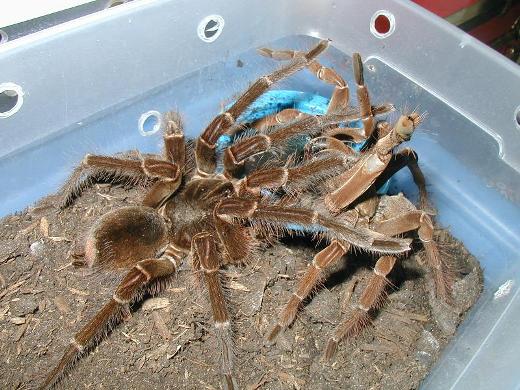Mating habits
After interviewing Rick West, I discovered Theraphosa blondi is a solitary animal. Upon this discovery, an enticing question prodded my mind; how do mating partners within this species find each other? Mr. West explained that mates find each other with the use of specialized chemo- and mechano-sensitive hairs, termed setae, located on the ends of the appendages. "The male can detect receptive females by means of pheromone traces of silk around or near a female’s burrow. Pheromones are a chemical produced by an animal, which stimulates a behavioral or physiological response by another member of the same species" (West, 2008). This silk can also detect prey items wandering near the burrow entrance. See Predation (West, 2008).
After a female is found, "the male taps his forelegs near or at the female burrow entrance to ‘test’ what type of response he’ll receive. If an aggressive response from the female, he retreats and may or may not try again. If receptive, the male will maneuver the female in the position for mating" (West, 2008). video
